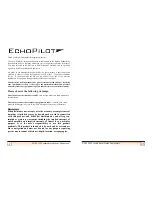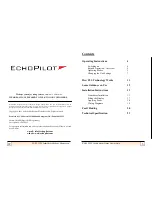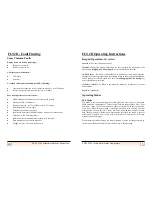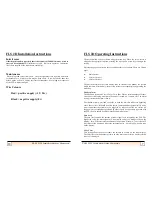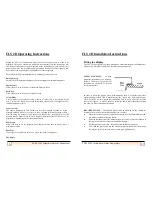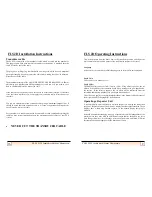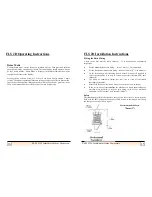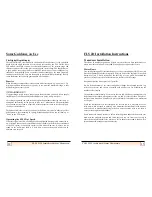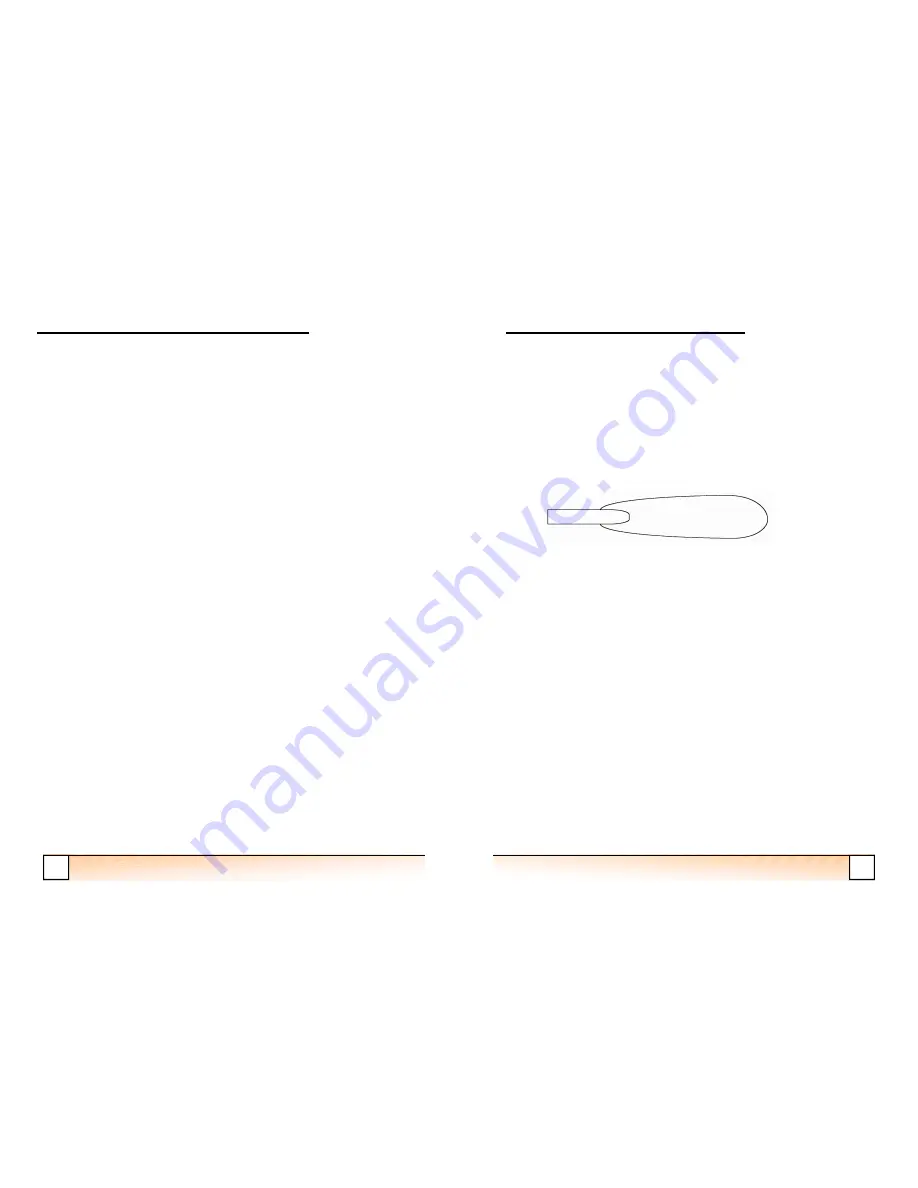
14
FLS 2D Instruction Manual
FLS 2D Installation Instructions
Sailing Boats
On a fin keeled boat, alongside the keel and perhaps 60cm or 2 feet out -
because the beam is approximately 15 degrees overall in the horizontal plane, is
often a well protected position. But this is unsuitable for a winged keel or large
bulb as the signal from the transducer could impinge on these. Just forward of
the keel is an alternative, but take care when hoisting the boat in a sling!
Do not fit the transducer too far forward where it will come out of the water as
the vessel pitches. The transducer looks ahead as well as down and you need to
see what is under your boat as well as what is ahead. When manoeuvring in
shallows you will wish to know what is under the keel or rudder.
A long keel boat is harder, choose the position with the minimum angle of
deadrise (ie the flattest area) and fit the transducer with a pair of wedge shaped
chocks if necessary, so that it is as near to vertical as possible with the boat
upright. On boats with slack bilges it maybe necessary to fit the professional
transducer, even on a small vessel, because its skin fitting has more useable
thread. If the transducer leans forward the seabed will appear to slope up and if
it leans aft there maybe surface clutter.`
Choose a position with good access so that the transducer can be withdrawn for
cleaning if necessary.
Remember that sonar cannot see around corners, so stand under the boat with
your head near the proposed position. You must be able to see from your toes up
to above the horizontal ahead. If the boat has a full or deep forefoot obstructing
the view a more forward position maybe called for.
11
FLS 2D Instruction Manual
How FLS Technology Works
Sonar Beam
The EchoPilot FLS is a unique and patented invention. It can see through a full
arc of 90 degrees, from straight ahead to straight down.
The transducer has a fairly narrow horizontal beam of approximately 15 degrees
(port to starboard). In practice, as sensitivity reduces with distance (especially at
the edges of the beam), the polar diagram looks more like an elongated balloon.
Distance Ahead
The distance ahead that the FLS can see depends on the depth of water below the
vessel, and the laws of physics. The transmit ‘ping’ radiates at all angles down and
out from the vessel, hits the sea bed and some of it is returned to the transducer’s
receiver.
As the ‘ping’ travels further away from the boat, it hits the sea bed at an increasingly
acute angle. At a certain point the angle will be so acute that the ‘ping’ is not
returned, and the sea bed information is lost - this determines the maximum view
ahead.
When on a flat muddy bottom (e.g. river or estuary) the FLS will show the seabed up
to three to five times the depth away from the boat. This ratio increases to eight to
nine times if the seabed shoals upward. Rocky bottoms are better targets than muddy
ones, and hard vertical surfaces like quay walls, rocks or coral reefs will often be seen
at considerable distances.
Forward Beam


